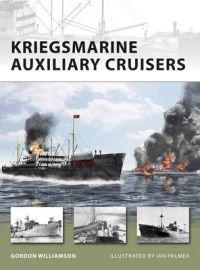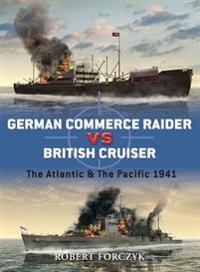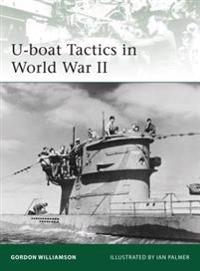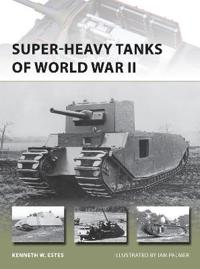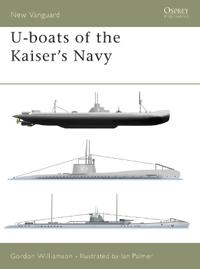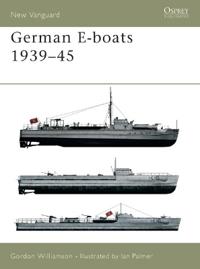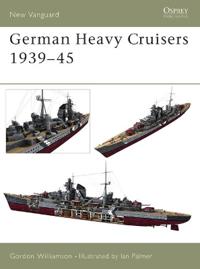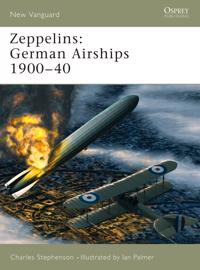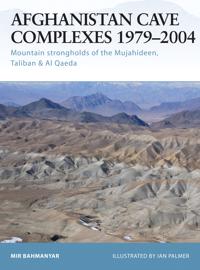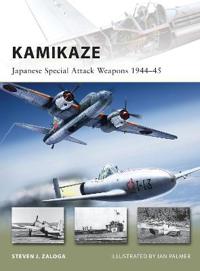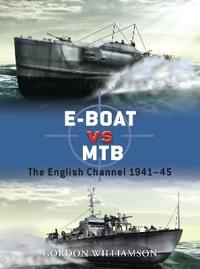Managing Organizational Change (Häftad)
avIan Palmer, Richard Dunford, Gib Akin
ISBN: 9780071263733 - UTGIVEN: 200807Second edition.
Managing Organizational Change (Pocket)
avIan Palmer, Richard Dunford, Gib Akin
ISBN: 9780073404998 - UTGIVEN: 2008-05-01Managing Organizational Change, by Palmer/Dunford/Akin, provides managers with an awareness of the issues involved in managing change, moving them beyond "one-best way" approaches and providing them with access to multiple perspectives that they can draw upon in order to enhance their success in pro[...]
Arnie and Jack: Palmer, Nicklaus, and Golf's Greatest Rivalry (Häftad)
avIan O'Connor
ISBN: 9780547237862 - UTGIVEN: 2009-04Mark IV vs A7V (Pocket)
avDavid R. Higgins, Ian Palmer, Peter Dennis
ISBN: 9781780960050 - UTGIVEN: 201301The German A7V and the British Mark IV were similar in weight, size, and speed, but differed significantly in armour, armament and maneuverability. The A7V had thicker armour, and had nearly double the horsepower per ton. The Mark IV's pair of side-mounted 6pdr cannons forced the vehicle to present [...]
Kriegsmarine Auxiliary Cruisers (Häftad)
avIan Palmer
ISBN: 9781846033339 - UTGIVEN: 200904Despite the popularity of the U-boats and larger surface vessels like the "Bismarck" and the "Graf Spree," the vast majority of vessels within the Kriegsmarine served in the coastal forces. Though the public may generally have forgotten these smaller ships, many gave crucial service during the war a[...]
German Commerce Raider vs British Cruiser (Pocket)
avRobert Forczyk, Ian Palmer, Robert Forczyk
ISBN: 9781846039188 - UTGIVEN: 201006During World War II, the Kriegsmarine armed a number of merchant vessels with concealed guns and torpedo tubes for surprise attacks against Allied shipping. To counter this deadly threat, the Royal Navy employed cruisers and their intelligence-gathering apparatus to find and destroy the disguised Ge[...]
U-boat Tactics in World War II (Pocket)
avGordon Williamson, Ian Palmer, Gordon Williamson
ISBN: 9781849081733 - UTGIVEN: 201010At the start of the war, German U-boat technology vastly out performed that possessed by the Allies, and under the pressure of the war continual development helped keep pace with wartime needs and improvements in anti-submarine weaponry. But it was not just the technology that had to change. German [...]
Fitness for Work: The Medical Aspects (Pocket)
avBrown, Ian, Hobson, John, Palmer, Keith T
ISBN: 9780199643240 - UTGIVEN: 2013-01-24The fifth edition of this established book provides comprehensive and practical guidance on the effects of medical conditions on employment and working capability. Every significant medical problem is covered, including sickness absence, health promotion, and fitness for work and cancer. Legal and e[...]
Riot Control Vehicles (Pocket)
avChris McNab, Ian (ILT) Palmer, Chris McNab
ISBN: 9781472805157 - UTGIVEN: 2015-02Fully illustrated with a mixture of dramatic archive photos and manufacturers' images, this volume covers the little-known history of riot control vehicles. It explores the world of these vehicles from 1945 through to the present day - from adapted military armoured cars such as the Humber Pig (UK) [...]
Super-heavy Tanks of World War II (Pocket)
avKenneth Estes, Ian (ILT) Palmer, Kenneth Estes
ISBN: 9781782003830 - UTGIVEN: 2014-11The super-heavy tanks of World War II are heirs to the siege machine tradition - a means of breaking the deadlock of ground combat. As a class of fighting vehicle, they began with the World War I concept of the search for a 'breakthrough' tank, designed to cross enemy lines. It is not surprising tha[...]
U-boats of the Kaiser's Navy (Pocket)
avGordon Williamson, Ian (ILT) Palmer, Gordon Williamson
ISBN: 9781841763620 - UTGIVEN: 2002-03As was the case in World War II, one of the greatest threats to Britain during World War I was the German U-Boat menace. Gordon Williamson traces the development of the U-Boat from the Brandtaucher, designed by Wilhelm Bauer, the father of the German submarine arm, in 1850, through to the commission[...]
German E-Boats 1939-45 (Pocket)
avG. Williamson, Ian (ILT) Palmer, G. Williamson
ISBN: 9781841764450 - UTGIVEN: 2002-10By the outbreak of World War II, Germany had done much to replace the Kaiser's High Seas Fleet, which was scuttled following the German surrender at the end of World War I. Forced to build her fleet anew, although small, the Kriegsmarine possessed some of the most modern and technically innovative w[...]
German Heavy Cruisers 1939-45 (Pocket)
avGordon Williamson, Ian (ILT) Palmer, Gordon Williamson
ISBN: 9781841765020 - UTGIVEN: 2003-08The development of this excellent and successful class of warship only became possible after the Anglo-German naval agreement of 1935 eased restrictions on the types of ship Germany could build; even then only five of the class were permitted: the Admiral Hipper, the Blucher, the Prinz Eugen, the Se[...]
Space Shuttle Launch (Pocket)
avMark Lardas, Ian (ILT) Palmer, Mark Lardas
ISBN: 9781841766911 - UTGIVEN: 2004-07The Space Shuttle is one of the oldest and most famous manned launch systems. The only launch vehicle that has been used for a longer period of time is the Soviet (now Russian) R-7 booster. By the start of the third millennia, the Space Shuttle had carried crews into space over 85 times. Although it[...]
Zeppelins (Pocket)
avCharles Stephenson, Ian (ILT) Palmer, Charles Stephenson
ISBN: 9781841766928 - UTGIVEN: 2004-08On 2 July 1900 the people of Friedrichshafen, Germany, witnessed a momentous occasion - the first flight of LZ 1, Count Ferdinand von Zeppelin's first airship. Although deemed a failure, a succession of better craft (LZ2 to 10) enabled the Zeppelin to expand into the consumer market of airship trave[...]
Afghanistan Cave Complexes, 1979-2004 (Pocket)
avMir Bahmanyar, Ian (ILT) Palmer, Mir Bahmanyar
ISBN: 9781841767765 - UTGIVEN: 2004-10This title provides a detailed analysis and visual documentation of the caves and underground systems in Afghanistan constructed between 1979 and 2001. It also discusses the Anti-Terror Coalition's tactical approach to clearing these complexes, analyzing the military hardware and the assault teams t[...]
Kamikaze (Pocket)
avSteven J. Zaloga, Ian (ILT) Palmer, Steven J. Zaloga
ISBN: 9781849083539 - UTGIVEN: 2011-06"Kamikaze: Japanese Special Attack Weapons, 1944-45".
E-Boat vs MTB (Pocket)
avGordon Williamson, Ian (ILT) Palmer, Howard (ILT) Gerrard
ISBN: 9781849084062 - UTGIVEN: 2011-06"E-boat vs. MTB: The English Channel, 1941-45".





